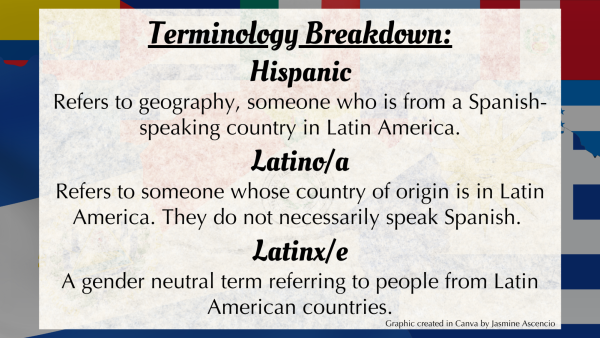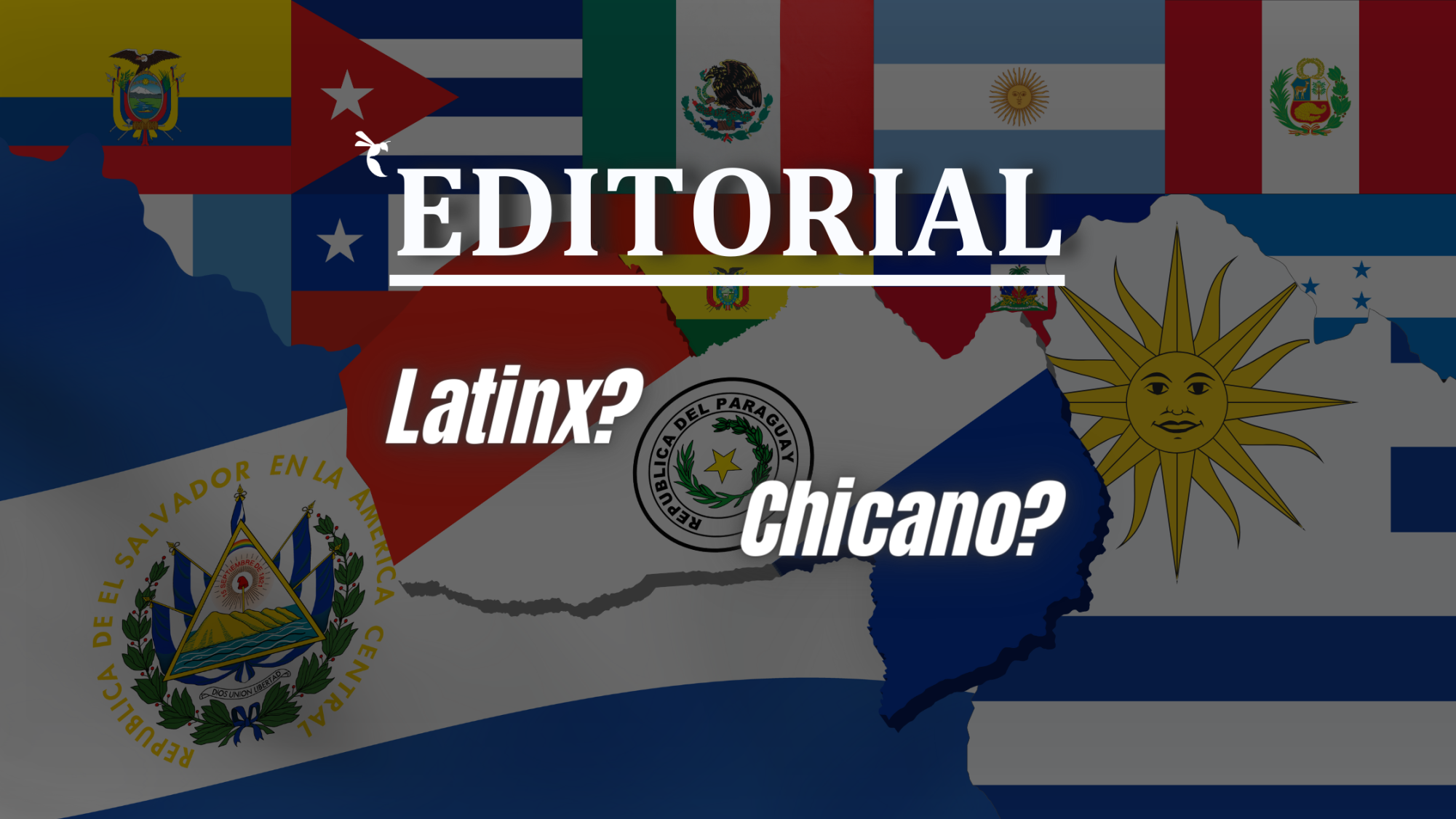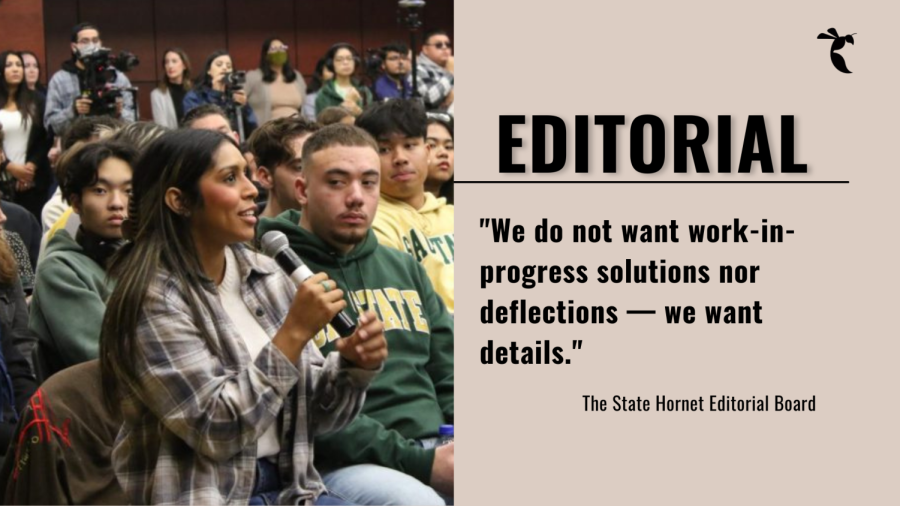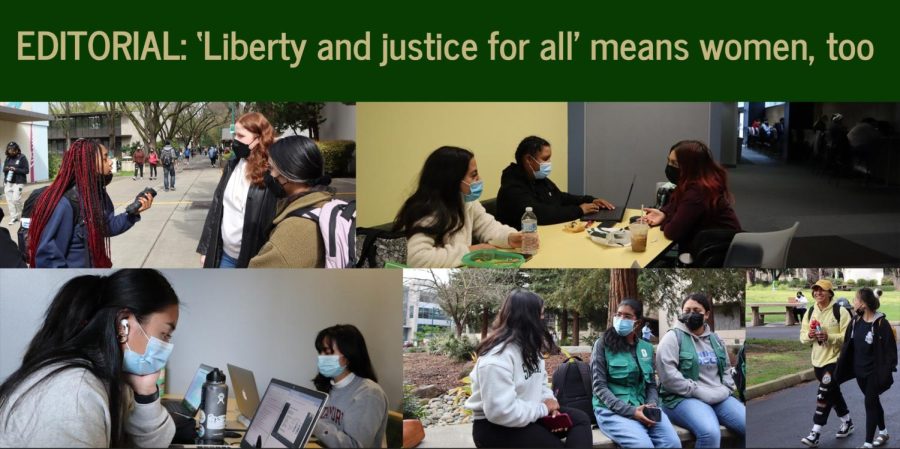The use of Latinx/e and Chicanx/e has been a long contended topic within the Hispanic/Latino community, nonetheless as journalists we carry the responsibility of properly identifying our sources.
In order to respect our sources from these communities and accurately represent them in our coverage, we will be adjusting our use of those terms in our coverage according to their preferences.
At the beginning of stories involving the Hispanic/Latino community, we will be adding the following editor’s note to give context to our use of their preferred terms.
At Sacramento State, the Hispanic/Latino community is the largest demographic at the university making up 36% of the student body as of fall 2023.
Sac State became a Hispanic Serving Institution in 2015 when its full-time undergraduate students who identified as Hispanic/Latino cleared the threshold of 25%. This made the university eligible for federal grants to help advance education within the Hispanic/Latino community.
Manuel Barajas, Sac State professor of sociology and interim director of the Center on Race, Immigration and Social Justice, has worked at the university since 2002.
In his Chicanx community class, Barajas has asked his students if they identify as Hispanic or Latino. He said around 95% of the time students will identify with their nationality.
Barajas said he finds that most of the community identifies with their specific nationality rather than overarching labels, such as Hispanic and Latino, that are most used by corporations and media.
He said these labels erase the diversity of this community and its indigenous roots.
“Latinx is a more current concept that is used to refer to a very broad, diverse group of peoples that were influenced by the conquest of Europe, of the Americas,” Barajas said.
The term Latinx was first searched in 2004, according to Google Trends. Latinx/e and Chicanx/e are terms that have been used as gender-neutral alternatives to Latino/a and Chicano/a.
According to a 2020 Pew Research study, 23% of Latino adults have heard of the term Latinx and within that group only 3% say they use it to describe themselves. Within the study, they found that 61% prefer the term Hispanic and 29% prefer the term Latino.
Comparatively, the term Hispanic is preferred among U.S. adults with Hispanic origins and Latino is preferred by immigrants, college graduates and Spanish speakers.
The State Hornet respects that members of the community have their own discernment of each term as the inclusion of “x” and “e” are attached to labels as a way to generalize a community made up of various nationalities, cultures and origins.

During the fall 2023 semester, our editorial board focused on improving coverage of underrepresented communities so that microaggressions and stereotypes are not perpetuated.
In order to make progress, we involved all section editors in our audit and created our first Diversity, Equity and Inclusion style guide as a resource to inform our staff in their reporting of diverse communities.
To maintain the Society of Professional Journalists’ Code of Ethics principle of minimizing harm, our publication took into consideration that the term “Latinx” doesn’t work for everyone.
The term has often been a source of controversy within the community. Those who support Latinx argue that it is a way to maintain inclusivity in a community where there are individuals who identify as nonbinary.
It has also been argued that Latinx challenges the patriarchal system established by the Spanish language.
In the Spanish language words that end in “o” are considered masculine and those ending in “a” are feminine. When talking about a group that includes both men and women, the word to describe that group ends in the masculine “o.”
For example, if a mother has two daughters and one son, the three children would be referred to as her “hijos.” Substituting the “o” and “a” for “x” avoids preferencing the males in that group.
On the other side of the controversy, are those who view Latinx as an attack on the culture as it is viewed to be imposed by U.S. colleges and activist groups without regard to how the word fits into the language itself.
In Spanish, the term is difficult to pronounce and defies grammar rules. Therefore, many view the term Latinx as an English word and have rejected Latinx.
RELATED: ‘We are very diverse’: Sac State professor reflects on migrant upbringing and overcoming adversity
When asked about his personal preference, Barajas uses Latinx or Chicanx, but when he goes back to his hometown of Stockton, California where these terms aren’t widely used, he identifies with his Purépecha tribe. This is an indigenous tribe that is located in Michoacán, Mexico.
“To empower Chicanx, Latinx, is to recognize indigeneity or blackness,” Barajas said. “Their belonging, their history, their struggles and their dreams for a world that values their humanity and right to exist with dignity and not be erased by monolithic, homogeneous terms that will not speak to our roots.”
It would be disrespectful and inconsiderate to utilize identifiers such as Latino/Hispanic and Latinx/e and Chicanx/e for members of a diverse community that do not all identify the same, have awareness of these labels and/or find it does not fit in their native language.
To not acknowledge that Latinx/e and Chicanx/e are utilized by some to be gender neutral would be dismissive as well.
Media should no longer choose labels or identifiers for our sources, as they have the capability and autonomy to identify themselves as they prefer.
This editorial was written by Jasmine Ascencio and Nancy Rodriguez Bonilla.





